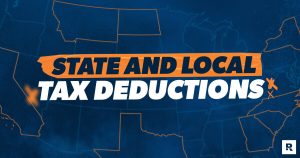Key takeaways
- Personal loan amounts vary by lender, but some lenders allow consumers to borrow up to $100,000.
- The amount a lender may approve you to borrow will depend on various factors, such as your credit score, income and debt-to-income ratio (DTI).
- Review your budget before applying for a loan to assess how much you can comfortably afford to borrow — doing this can minimize your chances of defaulting.
Some personal loan lenders allow you to borrow up to $100,000. But the amount you qualify for is based on your credit score and financial health.
According to TransUnion’s Q4 2023 Consumer Pulse Study, the average personal loan debt per borrower has increased to $11,773. That beats the average debt amount of $11,116 in Q4 2022 by over $600. However, many lenders offer loan amounts much higher than the average balance.
How much of a loan can I get with a personal loan?
Every lender will offer different personal loan terms, including the maximum and minimum amounts you can borrow.
Maximum loan amounts vary widely by loan type and lender eligibility requirements.
For example, lenders like SoFi offer $100,000 personal loans. That’s likely the largest unsecured personal loan you will find. And qualifying for such a large loan requires pristine financials.
Generally speaking, most lenders offer borrowers with good credit scores loan amounts ranging from $30,000 to $50,000.
Regardless of the maximum amount offered by the lender, the amount you qualify for will depend on your credit history, current score and your debt-to-income ratio. Every lender will have different minimum requirements. To qualify for the max loan amount, t’s crucial to meet and exceed the criteria.
If you don’t at least meet the financial requirements, a lender may interpret that as you not being able to afford a larger loan.
What influences the amount you can borrow?
Lenders take the following factors into account when reviewing your loan application:
Income
Lenders want to know you have enough steady income to comfortably afford a new loan payment. The larger your income, the more likely you are to get approved for a larger personal loan.
But it also matters whether a significant percentage of your income is already tied up in debt payments.
Current debts
Your lenders will consider your debt-to-income ratio (DTI) — the percentage difference between your monthly debt payments and your monthly gross income.
Most lenders prefer your DTI to be 36 percent or lower, even after adding in the new loan payment. However, those with a lower DTI are more likely to qualify for a larger loan amount.
Bankrate tip: Calculate your DTI by adding up your monthly debt payments, dividing by your gross monthly income and multiplying by 100. You can also use a DTI calculator.
Credit score
Lenders use your credit score as one of the primary factors in making lending decisions. Even if you have minimal debts and high income, a past history of missed payments or defaults will limit how much a lender offers you. The lower your score, the more risky you seem to lenders.
Additionally, your credit score and payment history will determine the interest rate you’re offered. The higher your credit score is, the more competitive your loan terms will be.
Employment
While you technically only need a regular source of income — which can be from benefits or self-employment — some lenders will offer larger loans to borrowers with a steady, predictable monthly income. Some lenders allow applicants to input multiple income streams, while others only accept one annual income.
If you’re self-employed or are a gig economy worker, check the requirements prior to applying or, if possible, prequalify to see your predicted approval odds without impacting your credit.
How much can you afford to borrow?
The amount you can afford will depend entirely on your budget. What can you spend without using your emergency funds?
You need to take into account more than just the principal amount. You should also consider the potential interest rate, the fees charged and how your desired loan term will impact the long-term loan cost.
A longer term would provide short-term relief by lowering the monthly payments. However, it would result in more interest accrual by the end of the repayment period, so you’ll pay more than you originally borrowed.
For example, a loan of $10,000 with an interest rate of 7 percent will have a significantly different monthly and overall cost depending on your loan term.
Even if you would prefer to have a smaller payment, try to pay as much as your budget will allow for each month to keep total costs down.
| Loan term | Monthly Payment | Total interest paid |
|---|---|---|
| 3 years | $309 | $1,115.75 |
| 5 years | $198 | $1,880.72 |
| 7 years | $151 | $2,677.85 |
How to qualify for a larger loan
While there is no shortcut to qualifying for a large loan, there are things you can do before applying to increase your odds.
- Improve your credit score: Make sure there are no errors on your credit reports and focus on making full, on-time payments on any current debts.
- Shop around: Compare multiple lenders, paying specific attention to the lender’s minimum eligibility criteria and loan terms and amounts. Go with the lender that offers the largest amount and most competitive loan terms.
- Lower your DTI: If you don’t need the loan immediately, consider chipping away at your existing debt. The lower your existing debt, the more likely you are to get approved for a larger loan.
- Consider a co-signer: If you’re having a hard time getting approved for a loan that meets your needs, look for lenders that allow for co-signers. Having a creditworthy friend or family member take on the loan with you can improve your approval odds and loan terms.
The bottom line
Personal loan amounts vary depending on the lender you choose, your credit score and overall financial situation. That said, no matter how much a lender offers, you should only borrow the amount you need to cover the expense. Over-borrowing will result in paying unnecessary interest and fees on money you may not need.
Lastly, compare personal loan rates from multiple lenders to ensure you get the best deal available for your situation. If you need a larger loan than what you’re getting approved for, use every option at your disposal — like using a co-signer or bolstering your income — before turning to alternative financing methods.
This will help you avoid predatory lenders marketing themselves as quick solutions for those with bad credit.
Read the full article here










